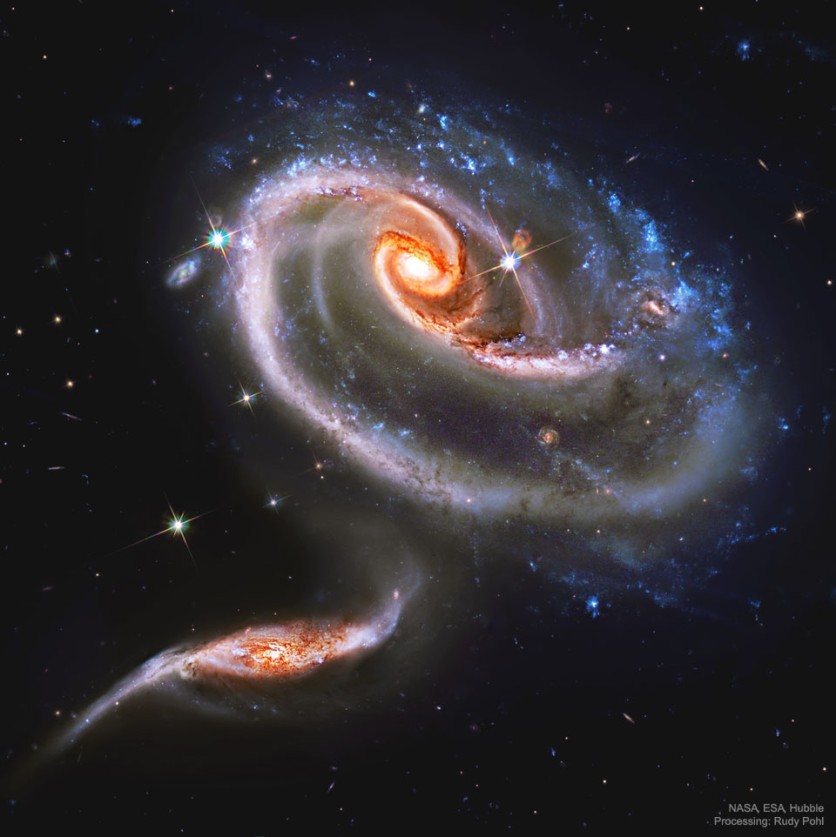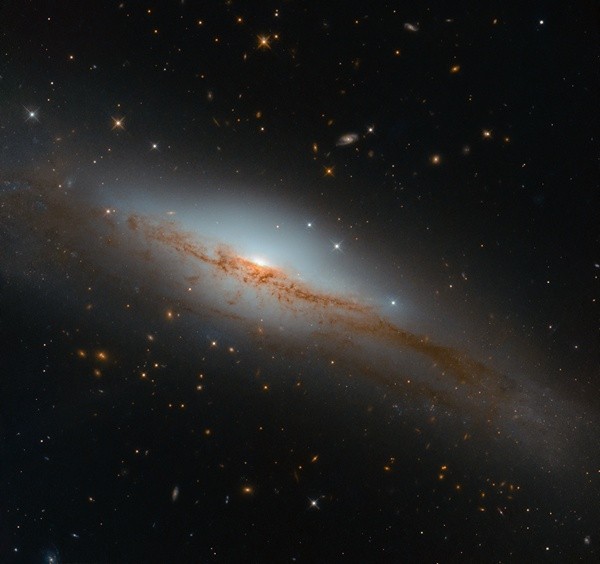The NASA/ESA Hubble Space Telescope has captured some of the most amazing images of our universe and helped our scientists study our universe and the galaxies in it. Among these amazing discoveries is the Arp 293 that Hubble was able to capture in all its brilliance.
The Dynamic Duo
Arp 293 is actually a cosmic feature made up of two galaxies, the NGC 6285 on the left, and the NGC 6286 on the right of the image.
So, what's interesting about these two galaxies?

From the image itself, we can ascertain that these galaxies are closer to each other than usual, located in the Draco constellation, according to NASA's website.
Several million light-years of space still separate the two galaxies in between them, but their gravitational pull is acting on each other.
According to Fox News, materials from both galaxies are starting to drift to one another, seen as the bluish haze in the image, and the reason why their shape is starting to deform, unlike the spirals that are pretty common with galaxies.
The Arp 293 is 250 million light-years away from our own galaxy, and it's apparently not the first interacting pair of galaxies that the Hubble Space Telescope has captured.
Galaxies in Battle
Last month, NASA published a photo captured by Hubble of "battling" galaxies, known as the Arp 273, which is about 300 million light-years away towards the Andromeda constellation.
In the marvelous image, the upper galaxy, dubbed as UGC 1810, is locked in a "titanic battle," as NASA describes it, with a shape that is likely due to "violent gravitational interactions" and that it will consume the neighboring smaller galaxy in the next million years.

Once it does, it will likely form into the classic spiral shape that most galaxies have.
Apart from these cosmic features, NASA and ESA's Hubble have discovered galaxies that have collided into each other or are yet merging to form one giant cosmic body.
Our own galaxy, the Milky Way, is also expected to merge into our neighboring spiral galaxy, Andromeda—but it won't be happening until after four billion years, which by then the sun will have grown hot enough to burn the Earth's surface.
Brimming with Young Suns
Besides these magnificent interacting galaxies, the Hubble Space Telescope has also found an interesting galaxy that is brimming with young suns.

According to Astronomy.com, the galaxy is known as the NGC 3749 and is located 135 million light-years away from our planet.
NGC 3794 is a classic emission line galaxy, which astronomers name those that emit a certain kind of light that tells our experts it is forming millions of new stars.
ALSO READ: Scientists Find a Galaxy with Three Supermassive Black Holes
Through a process known as spectroscopy, astronomers can unlock the secrets that galaxies millions of light-years away from us hold, just by spreading the light from the galaxy out and analyzing how the light behaves—which is either absorbing energy or emitting it.
NASA's experts have done the same process with the NGC 3794, and they have found out that the galaxy is still filled with young stars and is yet to expend all of its star-forming material.
ⓒ 2026 TECHTIMES.com All rights reserved. Do not reproduce without permission.




